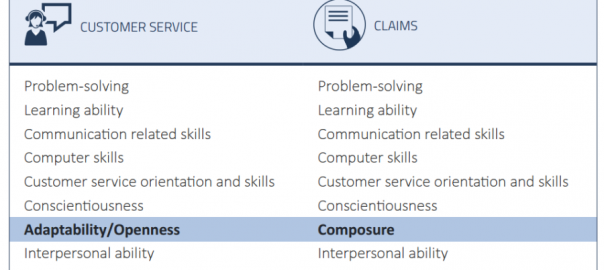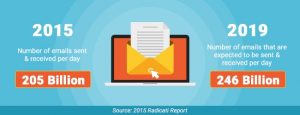
Walk into most contact centers, and you’ll find cubicle after identical cubicle, filled with agents who have access to the same systems, are offered the same incentives, and are required to produce the same results.
While no company wants its employees to act like robots, most organizations expect the same high productivity from everyone. Yet, many contact center managers find that there is a wide spectrum in the performance and enthusiasm of their agents.
When you take a step back and assess the performance of your top employees, you’ll probably notice the agents that thrive in your employment environment all seem to have a set of mysterious attributes that contribute to their success. It’s defining this “it” factor that drives contact center hiring managers to seek out tools that can help them figure out what skills and personality attributes an agent needs to perform well.
Why Use Predictive Analytics in Hiring?
Step out of the contact center and into the marketing department offices, and you’ll probably discover that they are already using predictive analytics to target customers with programs and offers. All of the great sales data that your company collects helps marketers predict how a customer will behave, and this same principle can be applied to talent analytics and the talent acquisition process.
When you utilize predictive hiring tools, you can identify those “it” factor agents and use your organization’s own data to predict a potential employee’s likelihood to behave in the same way. To illustrate this difference, take, for example, the competencies for success in a customer service position compared against those for an effective claims agent.
Through our own research, FurstPerson has discovered that while the two look similar, there are two key competencies that fit one position and not the other. Using job analyses to determine these competencies – and then using the data you gather to identify these competencies in your candidates – can make a significant difference between finding agents who stay and succeed versus those who don’t. By identifying the subtle differences required for each role, companies can reduce 0-180 day involuntary attrition by as much as 48%.

Rather than wasting costly resources continually training and losing agents in a desperate attempt to keep positions filled, when you use hiring analytics you can predict which candidates will meet your business’s objectives and stay motivated in your employment environment.
The Technology That Powers Predictive Hiring
Relying on talent analytics to find top-quality talent is not a new concept. Over the last 15 years, this approach has become increasingly common, and some within the industrial and organizational psychology world might argue that the last 40 years have been dominated by predictive analytics. While the concept has been around for a while, over the last few years, advancements in technology have greatly enhanced the results of predictive analytical models.
As cloud-based technology becomes widespread, predictive, data-driven models for hiring are taking off. Multiple platforms can now be connected so they operate together. For example, your hiring data can be integrated with your training data and performance data into one comprehensive data warehouse. “Big data” is now easier and less expensive to capture, store and analyze than ever before. Additionally, small data provides ways to make sense of the big data and ultimately, tweak and improve the hiring process further.
How Predictive Analytics Improve the Talent Acquisition Process
Trusting data as part of your talent acquisition strategy can sometimes feel like a “leap of faith” however, the data being gathered isn’t coming from nowhere – it’s specific information pertinent to the nuances of your company and the unique roles within it. The data you build from your hiring assessments is giving you what you need to make informed decisions, and if your pre-hire assessment process is designed well, it’ll serve you far better than interviews, references, or gut instincts ever will.
Hiring analytics will benefit contact center hiring leaders by helping them make more informed decisions. Here are three key benefits your contact center can reap by using these types of talent assessment tools to aid in your talent selection process:
1. Get the quality of hire you want
One of the most important uses for predictive hiring tools is for improving your quality of hire. When the hiring process is linked to performance and attrition data, engagement survey information and other relevant data from the employee lifecycle, models can be developed that will predict the potential performance of a potential candidate.
2. Source candidates from the right places
Another way that hiring analytics can enhance your processes is by improving recruiting through refining your efforts and source of hire. When your hiring managers can trace the source of a hire and then link this data to performance metrics, recruiters can make better decisions about how and where to focus their efforts. This way, precious capital isn’t wasted on channels that aren’t consistently delivering high-quality candidates.
3. Keep pace with your company’s hiring demands
A third benefit of the data provided by predictive hiring tools is the increase in the speed of hire. Research shows the best candidates are on the market for less than 15 business days. But once a predictive model has been designed, it can pinpoint which candidates are likely to succeed. With speedy access to this data, hiring managers can move quickly and acquire talent before they are drawn to your competition.
What You Need to Know About Predictive Analytics
As effective as hiring analytics can be, certain measures need to be in place for a model to be successful. The amount of data that needs to be collected requires investment in the technology needed to store and manage it. It also needs to be captured in a consistent way. If data becomes unreliable, so does the predictive analytics model. Organizations should also have a team of analysts or workforce scientists who understand data modeling and have the appropriate experience and credentials to review and develop new content.
Talent selection tools are a great resource for companies that are struggling to find and keep high-performing contact center agents. Technology is making it easier for all types of organizations to benefit from predictive hiring tools. Done right, you can use these hiring tools to make speedier, more appropriate hires and fill the seats in your contact center with agents with the “it” factor.
Business & Finance Articles on Business 2 Community
(53)
Report Post






